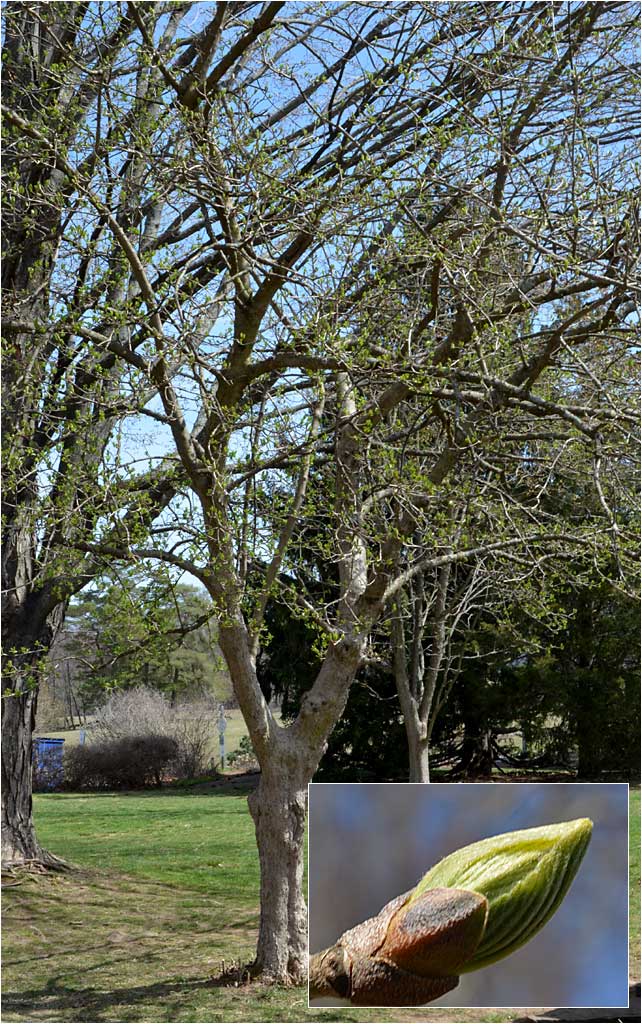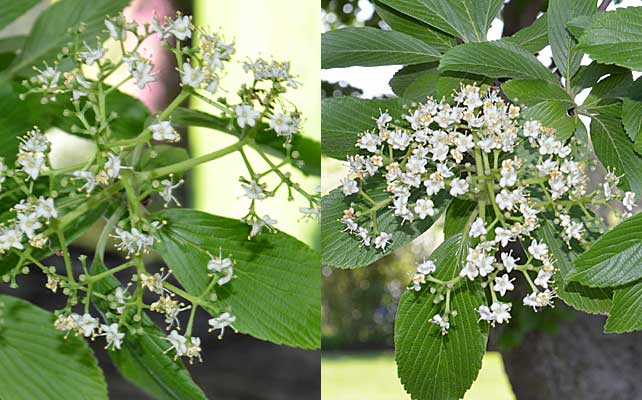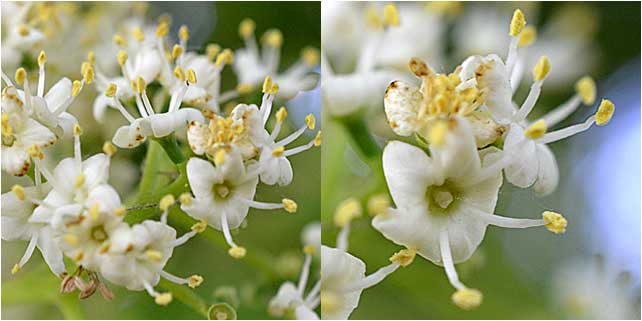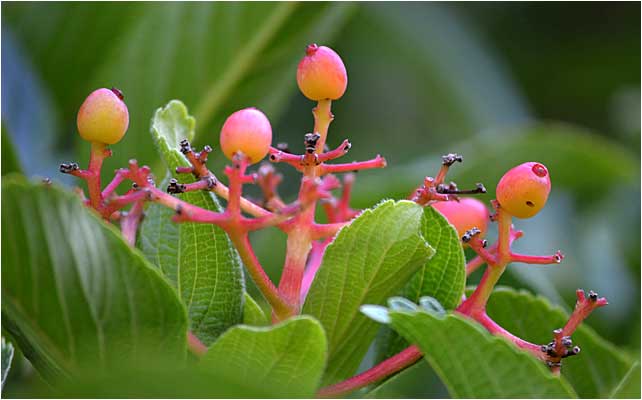20. SIEBOLD VIBURNUM
Viburnum sieboldii
CT Notable Tree

Winter view, Siebold Viburnum. Winter tells us a lot about a tree, just like a foundation and frame tells you a lot about a building. This one is sturdy, impossibly large for a Viburnum, and the bark and branches tell us it is old, yet healthy. And we haven't seen a single spot of green yet. This is a CT Notable Tree.
SPRING, FIRST TINGES OF GREEN

This is a non-native (Japan) tree that was planted by the Hunter Family probably around 1960 or so. They are a form of arrowwood viburnum named after a German naturalist several hundred years ago. Early spring produces the first twinges of green. The buds on the tree are multi-purpose.
SPRING, LEAF AND FLOWER BUDS

As the buds break, they may produce only flowers or a combination of flowers and a panicle - the foundation for future flowering and producing fruit.
RACEME OR CORYMB?

After the Viburnum buds break in spring, they produce leaves and also produce inflorescences - the structures that supports flower buds, flowers, and later fruit. This structure is known as a raceme (flowers at the end of the stalks) and even more specialized, a corymb. Corymbs are simply racemes whose flowers all appear in a flat row.
FLOWERS

In Spring, the tree is literally loaded with these very small flowers attached to the panicle. They are small, quite distinctive, and lovely.
FLOWERS, CLOSE-UP

Up close, the perfect flowers (male and female parts on the same flower) of the Siebold Viburnum are very attractive. The female stigma is at the center of the flower, the male stamens/anthers/pollen pods on the longer filaments.
FRUIT

After the flowers pass, the fruit develops over the summer and by late-summer these fruits appear in various colors. Quite beautiful, and the birds love them.